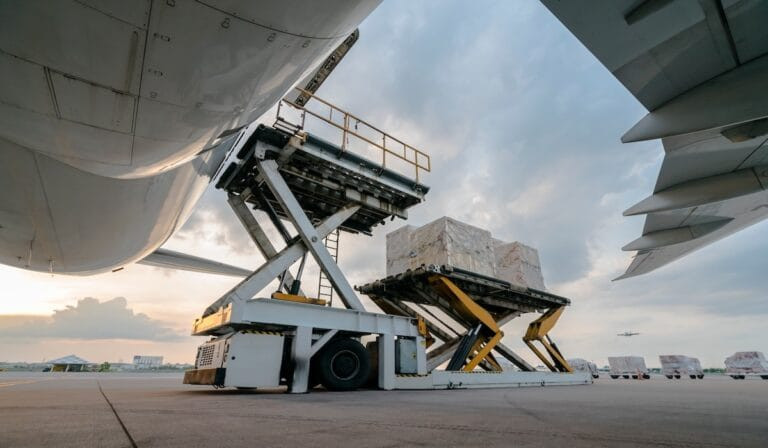Amid geopolitical flux and supply chain recalibration, businesses are increasingly weighing nearshoring strategies without completely severing ties with China.
READ: Rethinking the role of humans in air cargo tech
“Many companies have adopted a ‘China+1’ or, even more frequently, ‘China+many’ strategy — maintaining strategic relationships with Chinese suppliers while building capabilities in alternative regions like Mexico, Vietnam, or Eastern Europe,” QIMA’s Latin America Managing Director, Ivan Hernandez, stated.
The rationale behind this dual approach lies in a confluence of factors: “cost, infrastructure, geopolitical risk, proximity to key markets, and supplier performance data,” he outlined.
While some industries are shifting operations to lower-risk or closer-to-home locations, others remain deeply tethered to China’s mature manufacturing ecosystem. Hernandez pointed to the electronics sector as a prime example: “For some sectors, like electronics, China remains indispensable due to its ecosystem maturity — although big brands are starting to scale up production elsewhere in Asia, such as Apple’s iPhone manufacturing in India.”
READ: 60 seconds with… Guillaume Crozier
For industries like toys, the reliance on Chinese manufacturing is still nearly absolute. “In a recent QIMA survey, 97 percent of companies in the toy sector reported that China was among their top three key suppliers,” Hernandez noted. “The US Toy Association reports that 80 percent of toys sold in the US are made in China.” This entrenched dependency makes diversification not only complex but economically burdensome. “Setting up production in new regions is a costly and time-intensive process, so businesses in such sectors don’t have an option to exit China overnight.”
Geopolitical shockwaves
While the Covid-19 pandemic was the initial jolt that revealed the fragility of hyper-concentrated supply chains, the continuation of global conflicts has kept businesses on high alert.
“Five years ago, the Covid-19 pandemic was a huge wake-up call for supply chains, highlighting the risks of putting all eggs in one basket,” he recalled. That awakening has now become a guiding principle. “Diversification isn’t new — but the new heights of geopolitical instability are accelerating this trend.”
“After years of ‘just-in-time’ supply chain management, the ‘just-in-case’ option is important again. Companies now see redundancy and geographic flexibility not as inefficiencies, but as insurance policies,” he added.
Whether it’s the war in Ukraine, US-China tensions, or disruptions in the Red Sea, these flashpoints are influencing corporate strategies at a fundamental level. “The Russia-Ukraine war, US-China trade tensions, and Red Sea disruptions have all underscored the cost of over-concentration in any region,” Hernandez stated, making it clear that geographic diversification is no longer optional but a business imperative.
Mexico’s moment
As companies seek alternatives to Asia, Mexico is increasingly positioned as a nearshoring powerhouse — and for good reason. “Mexico has benefited from its proximity to the US, skilled labour force, and trade agreements like the USMCA, which, even under the current administration’s volatile trade policies, has so far spared Mexico the worst of the tariffs,” Hernandez explained.
Unlike other emerging production hubs, Mexico provides a unique value proposition: a combination of cost efficiency and logistical synergy. “It offers competitive manufacturing costs and an increasingly robust logistics infrastructure,” he continued. Beyond infrastructure, cultural and operational proximity to the US adds to the appeal. “North American companies view Mexico as a time-zone aligned partner, which accelerates decision-making and delivery.”
This isn’t just a theoretical shift — it’s backed by data. “In a recent survey, QIMA found that US-based companies consider Mexico as important to their supply chain as domestic suppliers,” Hernandez revealed.
Hard road home
Shifting production closer to home may seem like a panacea for today’s supply chain woes, but Hernandez was quick to point out the operational hurdles: “Challenges include limited supplier capacity, quality inconsistencies, and a lack of local compliance expertise.”
To address these gaps, companies are taking a phased and supported approach. “Companies mitigate risks by gradually onboarding new suppliers, investing in training programmes, and leveraging third-party audits to benchmark performance and ensure consistent standards,” he explains. Yet, even in Mexico, risk mitigation comes with its own challenges, particularly around security. “Businesses must also navigate heightened risks related to organised crime and drug trafficking,” Hernandez said.





